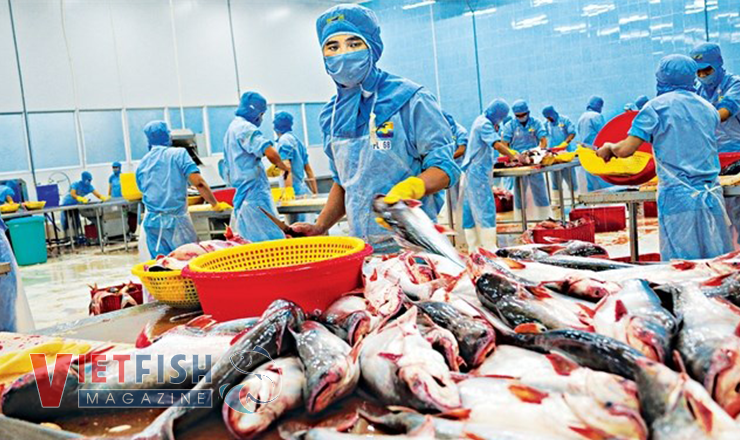Vietnam’s seafood exports projected to reach USD 10.1 billion in 2025
The Department of Import-Export (Ministry of Industry and Trade) forecasts that Vietnam’s seafood exports will see a slight increase in 2025, reaching 2.4 million tons in volume and generating USD 10.1 billion in revenue. This marks a 0.4% rise in volume and a 0.6% increase in value compared to 2024.
Market trends and export growth
The department highlights a decline in the natural white fish supply in the EU, particularly Atlantic cod. Since the UK exited the EU in 2020, seafood consumption trends in Europe have shifted, leading to greater dependence on imports. This challenge is exacerbated by a 25% reduction in the Barents Sea cod quota for 2025, affecting key suppliers such as Norway and Russia. Between 2020 and 2023, EU imports of major white fish species grew by 4% in volume and 27% in value.
Additionally, European consumers remain conscious of sustainable seafood sourcing, but rising living costs have made price a more significant factor in purchasing decisions. Many are now opting for more affordable seafood options or switching to alternative protein sources.
Vietnam’s seafood export performance in 2024
Data from Vietnam Customs shows that in 2024, seafood exports totaled approximately 2.39 million tons, valued at USD 10.04 billion, an increase of 13.3% in volume and 11.9% in value compared to 2023. Major seafood products recorded strong growth:
- Shrimp exports rose by 19.2% in volume and 15.1% in value.
- Pangasius exports increased by 17.5% in volume and 11.9% in value.
- Frozen fish exports grew by 5.6% in volume and 4% in value.

Key export markets in 2025
United States
VASEP predicts that 2025 will offer promising export opportunities, especially in key markets such as the U.S., China, ASEAN, and the Middle East. The U.S. economy is expected to remain stable and continue recovering, creating favorable conditions for Vietnamese seafood exports. In 2024, exports to the U.S. saw a 16% increase, exceeding USD 1.8 billion. Key products such as whiteleg shrimp, black tiger shrimp, pangasius, tuna, and crab all recorded steady growth.
A key driver of seafood consumption in the U.S. is the rapid increase in wages, which has outpaced inflation. This trend could lead to higher demand for food, including seafood. Additionally, the Federal Reserve’s easing of monetary policies is expected to stimulate economic growth in 2025.
However, challenges persist. VASEP warns that potential changes in U.S. trade policies, including new tariffs, could disrupt global trade flows and cause congestion at key ports, leading to increased transportation costs.
China
China remains a crucial market for Vietnamese seafood due to its geographical proximity, which helps reduce logistics costs. The country’s stable economic growth also supports strong demand for imported seafood. However, Vietnamese seafood products face intense competition from China’s domestic industry, particularly if Chinese seafood exports to the U.S. decline due to tariff increases. Additionally, China’s expansion of seafood exports to ASEAN markets such as Malaysia, Thailand, and the Philippines could put pressure on Vietnam’s seafood exports.
ASEAN
ASEAN is expected to lead global economic growth in 2025. Despite competition from China and India, the region remains an important market for Vietnamese seafood. However, demand may be affected by economic factors such as the decline of Indonesia’s middle class, which could impact seafood consumption in Southeast Asia’s largest economy.
Middle East
Although the Middle East currently accounts for less than 4% of Vietnam’s total seafood exports, it presents strong growth potential. Demand for seafood in the region is rising, driven by economic diversification efforts as Middle Eastern countries shift away from oil dependence and invest in sectors like tourism, technology, and food processing.
As Vietnam navigates the evolving global trade landscape, the seafood industry will need to adapt to changing market dynamics while seizing opportunities in emerging markets to sustain export growth in 2025.
VFM






